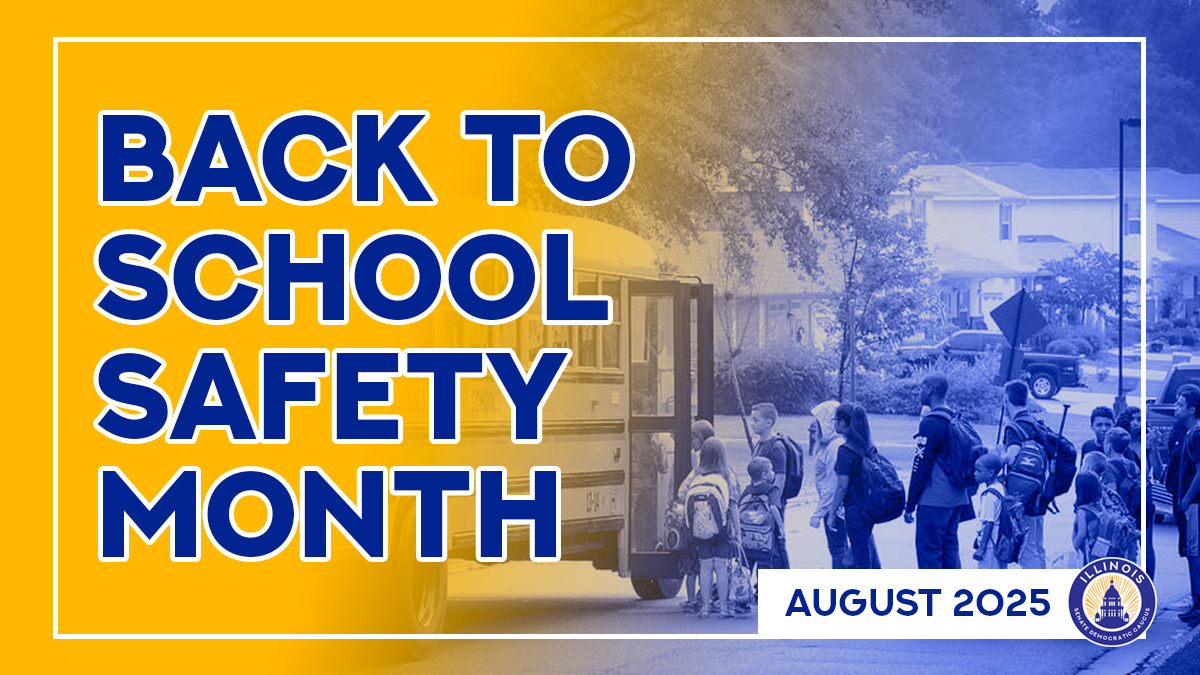
Know how you can practice #BackToSchoolSafety
- Slow down and obey speed limits
- Be aware of school buses
- Teach children walking and biking safety
The back-to-school season can be a blast for students, families and our wider school communities – boosting confidence, motivation and community relationships. However, with the return of students, parents and teachers to their routines, commute times can increase, traffic near schools can become congested and more accidents can happen on the road. During Back to School Safety Month, and all year long, drivers, parents and students should learn the importance of traffic safety, practice caution in school zones and near buses, and obey traffic laws.
School zone safety
School zones are designed to protect students, mandating specific measures to ensure optimal safety for children as they walk, bike, bus or drive to school. According to the National Highway Traffic Safety Administration, an average of 111 children are killed every year while walking to school and more than 25,000 are injured in school zone accidents. In Illinois, there were 1,700 school zone-related crashes in 2022, resulting in 12 fatalities.
To enhance safety in our school zones, speed limits are reduced to 20 miles per hour on school days when children are present, between 6:30 a.m. and 4 p.m. Drivers must also yield to pedestrians in crosswalks and are not permitted to use their mobile device at any point while driving – especially in school zones.
For additional safety, schools will often employ crossing guards to help children safely walk across high-traffic streets and intersections. When drivers see a crossing guard, it’s important to stay alert and obey the guard’s signals. When a crossing guard enters a crosswalk with their stop sign raised, drivers must stop – behind the lines of the crosswalk – until all pedestrians and the guard have exited the crosswalk and the guard has lowered the sign. Drivers should never block crosswalks, as this can put children and the crossing guard at danger if they need to walk around the vehicle.
Bus safety
For families who utilize their school’s bus system, ensuring the safety of their student during their commute to school is crucial. Obeying bus traffic signals is especially important for avoiding serious accidents, injuries or fatalities.
In Illinois, drivers on two-lane roads must stop for stopped school buses with flashing red lights and extended stop arms, regardless of the direction of their travel. On four-lane roads, drivers traveling in the same direction as the stopped bus must stop, while those in the opposite lanes may continue driving with caution, unless children are attempting to cross the road.
To keep students safe, school buses are required to stop at railroad crossings so drivers can visually and audibly confirm no train is approaching. Drivers traveling behind the bus are required to stop, as well, while drivers traveling from the opposite direction are not required to stop. Attempting to pass a school bus while it’s stopped at a railroad crossing can be dangerous – putting yourself, students, pedestrians and other drivers at risk.
Parents and guardians can also encourage students’ safety near school buses. Children who plan to ride the bus should arrive at their bus stop early, wait in a designated area at least 10 feet (5 giant steps) away from the curb and always wait for the bus driver’s signal before attempting to board. It’s important to instruct children to never go under a stopped bus and to never chase a bus they missed, as this can lead to accidents if the bus driver or other motorists don’t see the child.
Pedestrian safety
Children learn by example, and there’s no better way to enhance pedestrian safety for students than by consistently demonstrating safe practices, teaching children to be aware of their surroundings and choosing safe routes and crossings.
Every child is different, but it’s recommended children under the age of 10 are supervised near all traffic, as they can struggle to judge the speed and distance of cars traveling near them. When walking with children, minimize distractions, like using electronic devices, and verbalize your actions to highlight the importance of staying alert and aware of your surroundings.
Also, teach children to choose safe routes for walks – including routes with sidewalks and fewer traffic signals, when possible. If students do have to travel across busy streets and intersections, it’s important to obey traffic signals and utilize crosswalks – waiting when instructed and looking both ways before crossing. If sidewalks aren’t available, walk facing traffic as far to the left as possible.
Cyclist safety
Biking can also be a fun and healthy way for students to travel to school, but only if parents and students are following safe practices. Any student who bikes to school should wear a properly fitted helmet with the chinstrap securely fastened. Helmets significantly reduce the risk and severity of serious head injuries in the event of an accident.
Other ways to encourage safety include wearing bright or reflective clothing, riding in bike lanes when they’re available and following the rules of the road – same as a motor vehicle. Teaching children the proper bicyclist hand signals will allow them to communicate traveling intentions to motorists, pedestrians or other cyclists – improving safety for everyone on and off the road.
By prioritizing safety, we can ensure all our students have a successful start to the school year. This Back to School Safety Month, practice traffic safety and teach bus, pedestrian and cyclist safety to the children in your life so students have a fun and secure transition as they prepare for the academic year.












 © 2025 Illinois Senate Democratic Caucus
© 2025 Illinois Senate Democratic Caucus